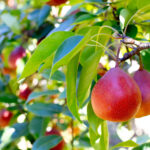Fruit fly detection puts New Zealand growers on alert

New Zealand's agricultural industry has been placed on alert following the detection of a male Queensland fruit fly in a surveillance trap in the northern city of Whangarei.
At the time of writing, the Ministry for Primary Industries (MPI) had found no additional detections of the insect. As a preventative measure, it established a controlled area around the city, restricting the movement of whole fresh fruits and certain vegetables.
"These legal controls are an important precaution while we investigate whether there are any further fruit flies present," said WPI deputy director general, Andrew Coleman.
"Should there be any as yet undetected flies out there, this will help prevent their spread out of the area.
"The Queensland fruit fly is an unwanted and notifiable insect that could have serious consequences for our horticultural industries. While we search for any further signs of the fruit fly in Whangarei, we need the support of local people."
The circular 1.5km area around the detection site includes parts of Parihaka, Riverside and central Whangarei.
MPI released an extensive list of key fruits and vegetables of concern, including all citrus fruits, all stonefruit, pome fruit, berries, grapes and avocado.
Residents are asked to not compost any of the at-risk fruits and vegetables, and are encouraged to use sink waste disposal units when possible.
The restrictions were expected to extend for a couple of weeks.
"We appreciate this will be inconvenient for the many people living in and around Parihaka, Riverside and parts of central Whangarei, but compliance with these restrictions is a critical precaution to protect our horticultural industries and home gardens," Coleman said.
Detection efforts to locate other possible fruit fly cases will include laying traps and checking trees using a team of MPI investigators.
Queensland fruit fly has been detected in New Zealand three times before: once in Whangarei in 1995 and twice in Auckland in 1996 and 2012. In all cases, no additional signs of the fly were detected.
"It is vital to find out if the insect is a solitary find or if there is a wider population in Whangarei," Coleman said.
"This insect is an unwanted and notifiable organism that could have serious consequences for New Zealand’s horticultural industry. It can damage a wide range of fruit and vegetables."
HortNZ emphasized the importance of treating the pest, highlighting the possible damage created by control costs and potential loss of international markets.
"This is an anxious time for all growers and the whole horticulture industry," HortNZ president Julian Raine said.
"We are watching the response efforts very closely and providing support and advice to the Ministry where we can.
"Growers appreciate the difficulties this is going to cause for people living within the controlled area that has been set up around the find."
Photo: James Niland via Wikimedia Commons













































